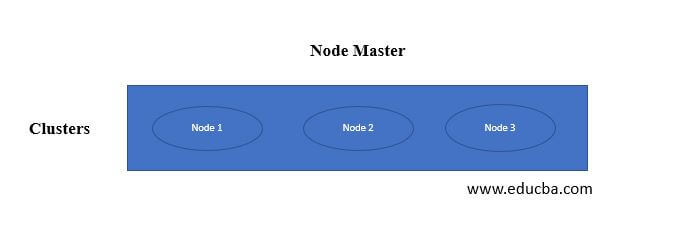Updated March 16, 2023

Introduction to Logstash Cluster
The Logstash cluster is one of the features, and it will be worked to the specific Logstash hosts and used inside with some beats configurations made during the load balancer setup; the TCP and other protocols are called during the Logstash front endpoint will be managed to each cluster setup that behind on the load balancer for latency fit with specified nodes in the cluster.
What is Logstash Cluster?
Logstash is the server-side data processing pipeline that can be used to allow the data collected from several sources and delivered to the destination. It’s one of the open-source analytics and the search engine. It is frequently utilized with the data pipeline for popular choices loading the elasticsearch data because of the close interaction with powerful log features pre-defined with the open-source plugins. In addition, it may be used to fetch the values by using the data index.
How to Setup Logstash Cluster?
The logstash cluster will be working on the ELK stack-based Elastic Search, Logstash, and Kibana called the ELK cluster. We can send the Logstash to Elasticsearch API via Logstash and Beats etc. The node’s target is the Elasticsearch ELK stack, described as the type of technology comprising the three products together. All these three are open source and stack application API integration which will be handled plenty of projects to find the solutions to the log management console. Additionally, we used Beats as one of the products like Logstash, but Beast is the type of agent that can be configured in the number of servers and containers, and it helps to collect the type of datas and forward it to the ELK stack processing.
We already know that when we make a cluster, the nodes have to be played the main part of the servers. So in these n number of nodes are to be joined and to form a cluster, and we can call it the instance of each node cluster. So the cluster is the group of nodes with the same cluster name across all the attributes. The nodes are joined or left as the cluster; then, it automatically recognizes itself to check and validate the data processing on every distributed node cluster.
The above diagram explains the group of nodes in the node master, which formed the cluster.
Logstash Cluster Module
This logstash cluster folder contains mainly the Terraform module to deploy the codes in the Logstash cluster in the AWS, Azure, or any other hosting technology. On top of the Auto Scaling Group, the main idea is to create the hosting machine-like AMI(Amazon Machine Image), etc. Then, the Logstash will be installed using the install-logstash modules.
Terraform Module:
It’s the main part of the Logstash cluster setup, which we can be configured through the code by adding this module to the folder and setting some parameters like source, user_data, ami_id, etc. Mainly this module, as the below format code,
module "logstash_cluster" {
source = URL
ami_id = ""
user_data = <<-EOF
#!/bin/bash
/usr/share/logstash/bin/run-logstash //path
EOF
}The above code is the basic format, and we can pass the values in the source, ami_id, and user_data parameters. Mainly this module contains three different features,
- Auto Scaling Group,
- Load Balancer
- Security Group
Auto Scaling Group is the main module part that helps run the Logstash on top of the Auto Scaling Group(ASG), which will run with different instances and spread worldwide. Each instance will be running with the AMI machine, which is already installed Logstash on the machine.
Regarding Load, a balancer is generally used in web-based scenarios; we can call and send the application request to multiple servers using the Load balancer URL. It will be splitted accordingly so that it’s called the Network Load balancer for performing the health check on the cluster, Logstash node, and even Filebeat can be accessed to the Logstash cluster.
Final Security Group will be called and perform the AWS or any other hosting environment instance to all the incoming and outbound requests. Even it has the set of security group id for exporting the logstash security group modules to open all the ports, which is necessary for the Security Sections.
The logstash-cluster module mainly used the Gruntwork server-group modules, while running the terraform module will apply the zero-downtime for rolling the deployment. We used AWS and other instances like EC2 to pass the Load balancer health checkups and replicate the other parameters from the same as the old cluster.
Logstash Cluster Configuring
Mainly we used elasticsearch, kibana, logstash, and filebeat; all come with single or multiple types of clusters based on the requirement. If we need a single server cluster setup, the Application Load Balancer will be used to call and send the request to the server.
Initially, we used a git clone to reproduce this on our machine.
We need to Terraform for deploying the clusters Automatically based on the configuration.
Creating terraform instance files like the below,
module "ec2_instance" {
source = "terraform-aws-modules/ec2-instance/aws"
version = "~> 3.0"
name = "single-instance"
ami = "ami-ebd02392"
instance_type = "t2.micro"
key_name = "user1"
monitoring = true
vpc_security_group_ids = ["sg-12345678"]
subnet_id = "subnet-eddcdzz4"
tags = {
Terraform = "true"
Environment = "dev"
}
}The above code is the basic config for creating the Single cluster setup using Terraform modules. We can save the instance file as fileName.tf format. We required an AWS login for the AMI setup in the terraform module for performing the Logstash cluster setup.
Conclusion
Logstash is the server-side feature and technology for accessing the user datas like logs, and it can be coordinated with the Kibana and Elasticsearch modules. Elasticsearch is the centralized component for using the cluster setup and performing the Logstash operations, so we can call it the ELK stack module with the cluster setup.
Recommended Articles
This is a guide to Logstash Cluster. Here we also discuss the definition and how to set up Logstash Cluster with its module and Configuration. You may also look at the following articles to learn more –

